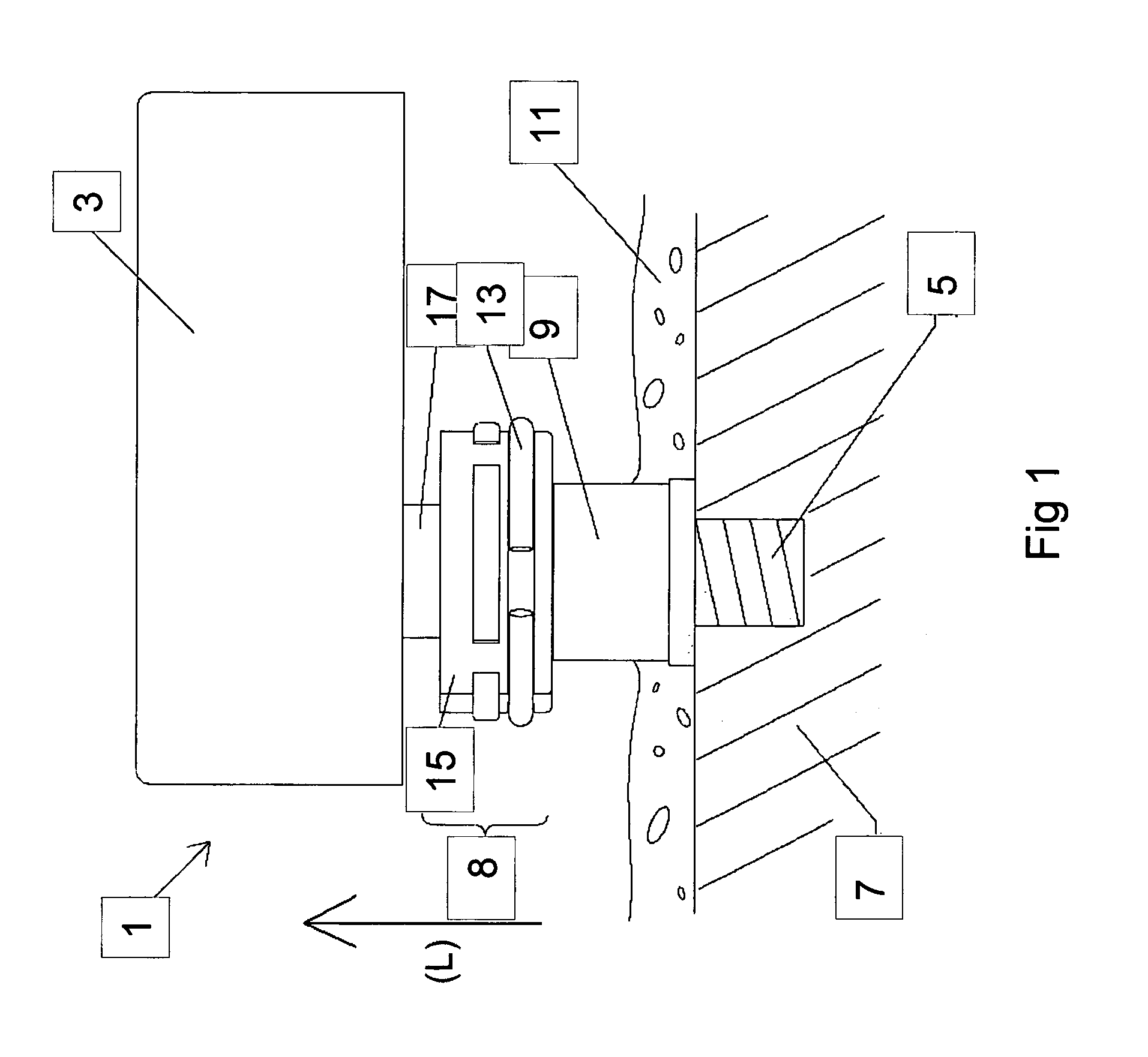Connector system
a technology of connecting parts and connecting rods, which is applied in the direction of couplings, pipes, electrical equipment, etc., can solve the problems of difficult to change the coupling part of the hearing aid, difficult to get a constant coupling force, and significant cost and problem for patients, so as to achieve easy removal and replacement of springs, significant cost savings, and high flexibility of the system
- Summary
- Abstract
- Description
- Claims
- Application Information
AI Technical Summary
Benefits of technology
Problems solved by technology
Method used
Image
Examples
Embodiment Construction
[0017]In FIG. 1, a preferred embodiment of a connector system 1 for interconnecting a hearing aid 3 with a fixture 5 anchored in the skull bone 7 is shown. A connector 8 is on one side in operative engagement with an abutment 9 which is mounted on the fixture 5 and which goes through the skin 11. The other opposite side of the connector 8 is in operative engagement with a connector plate 17 that is connected to the hearing aid 3. The connector 8 includes a circular metal spring 13 and two coupling shoes 15 mounted on the connector plate 17. The spring 13 is removably attached to a groove 18 defined on an outside surface 19 of the shoes 15. In FIG. 2 the connector plate 17 has a circular connector contact surface 20 that is in contact with a contact surface 21 of the abutment 9. An abutment coupling area 23 on an outer mantle surface 25 of the abutment 9 is conical with a conical angle 27 relative to a centre axis of the abutment and has an increasing diameter in a lateral direction ...
PUM
 Login to View More
Login to View More Abstract
Description
Claims
Application Information
 Login to View More
Login to View More - R&D
- Intellectual Property
- Life Sciences
- Materials
- Tech Scout
- Unparalleled Data Quality
- Higher Quality Content
- 60% Fewer Hallucinations
Browse by: Latest US Patents, China's latest patents, Technical Efficacy Thesaurus, Application Domain, Technology Topic, Popular Technical Reports.
© 2025 PatSnap. All rights reserved.Legal|Privacy policy|Modern Slavery Act Transparency Statement|Sitemap|About US| Contact US: help@patsnap.com



